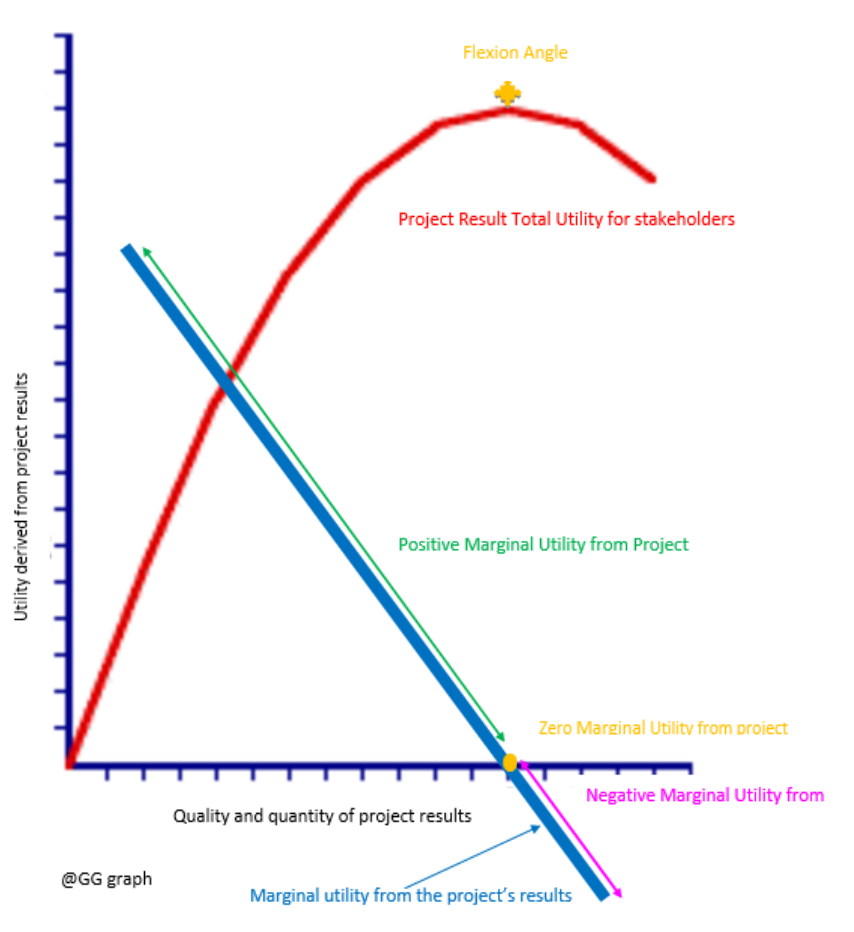
Exceeding Expectations is a Quality Killer
Do you remember a time when you were hungry, and once your favorite food was brought, you couldn’t help but consume only part of it? Why didn’t you eat it all, given it is your favorite food? The answer is very easy. As you eat, hunger starts to disappear and immediate interest in the favorite food starts to reduce until it disappears. At the time you feel satisfied with already eaten food, swallowing an extra unit will be harmful. How would you feel if a friend of yours insist that you should eat that extra quantity of that delicious food?
The project management profession is full of similar stories. In the project management profession, stakeholder engagement is paramount to the project’s success. The purpose of fully engaging stakeholders is to ensure their satisfaction.
Why do stakeholders’ expectations matter?
Project management is one of the few jobs that are likely to suffer less from robotization. This is because the project management job involves interacting with people to understand their needs to serve them better. The business case at the origin of a project ensures the business bottom line is at the service of key stakeholders essentially customers, end-users, suppliers, and the sponsor. Consistency in project management consists of regularly testing the correspondence between the business case and stakeholders’ expectations. This test helps ensure that the project implementation serves the needs and wants of stakeholders since a project, regardless of the industry, should be pro-people. By trying to develop a new product, service, or result, a project exists to serve the needs or expectations of key stakeholders mainly customers and end users.
Benefits realization: the total utility for stakeholders
As rightly put in the previous section, a project exists to serve the needs of key stakeholders. Customers and end-users invest their capital into a project expecting that the ultimate result will make them better off or happier. When a project manager or a project team member strives to meet stakeholders’ expectations, she/he assumes that by doing so the beneficiary stakeholders will get more enjoyment or happiness from the project results. Microeconomics teaches us that this satisfaction, or happiness felt by the consumer, or the stakeholder in the project management language, is also known as utility in the disciple of Economics. Utility function has been largely studied by microeconomics scholars and they postulate that the consumer will seek to maximize the utility derived from consumer goods and services. If project team members stop here, they will spare no effort to find how they can exceed customers’ expectations. However, Microeconomics arrived at a conclusion that for a single good or service (project result in this case), consumers maximize the enjoyment or total utility when marginal utility becomes zero, as its curve reaches the flexion angle. At this point, the total utility starts to decline, and the extra unit of goods consumed starts harming the consumer as illustrated in the following graph. Remember the old saying that “too much is always bad”.

Advertisement
[widget id=”custom_html-68″]
Navigating the project complexity to meet stakeholders’ expectations
In light of the above discussions, the work entrusted to the project manager is not straightforward. It is full of changing individual and organizational behaviors, a dynamic system behavior resulting from connectedness and interdependency of project elements that interact to bring about change as well as ambiguity stemming from unclear cause-and-effect relationships, emergent issues, and situations that can be interpreted differently.
Stakeholders’ expectations are embedded in individual and organizational behaviors, which, as mentioned above, are changing. The changing nature of stakeholders’ expectations makes it difficult to identify them. Targeting to exceed stakeholders’ expectations will bring more complexity as, to be safer, it would be built on assumptions of increasing marginal utility which is a very rare situation. Proponents of the postulate of exceeding stakeholders’ expectations base their view on the assumption that the expectations in question are less than the maximum total utility or benefit that can be obtained from the project. However, this is not always true, given that history is full of examples of overambitious stakeholders. In addition, this assumption of a sober and realistic stakeholder tends to forget other aspects that make project management complex namely the limited resources, emerging issues, stakeholders’ changing behavior, and most importantly the diminishing marginal utility of most of the project results as well as their opportunity cost.
To solve this problem, the adaptive approach in project management proposes to regularly check stakeholders’ expectations and adjust targets to a desired, justifiable, and affordable level. By adjusting project targets, the project team will hence deliver to newly identified stakeholders’ expectations rather than exceeding them. The adaptive approach will embrace the continuous improvement practice in which the regular assessment of stakeholders’ expectations will be the mandatory entry point.
Ethics and exceeding stakeholders’ expectations
In most situations, the project team members work as agents on behalf of the sponsor who is the principal. They receive the project implementation mandate from the sponsor or the customer. The project team is selected based on its skills, experience, exposure, and network, assumably required for successful project implementation. As they carry out their duties, team members obtain specific information on the project. Ethics requires the project team to share specific information with relevant stakeholders to ensure informed decision-making. Before delivering beyond expectations, a team member that behaves ethically will check with the concerned stakeholders if doing so will be beneficial for them. If the stakeholder confirms his interest, then the project team will be delivering on revised stakeholders’ expectations rather than beyond expectations.
If on the contrary, the project team goes ahead and delivers the unilaterally revised targets without confirmation from concerned stakeholders, this will sound unethical because one would ask why hiding good things, and the moral hazard can easily slip in this behavior.
Conclusion
As a continuous improvement practice, it is recommended to regularly check stakeholders’ expectations to deliver just on it. It goes without recalling that “too much is always bad”.